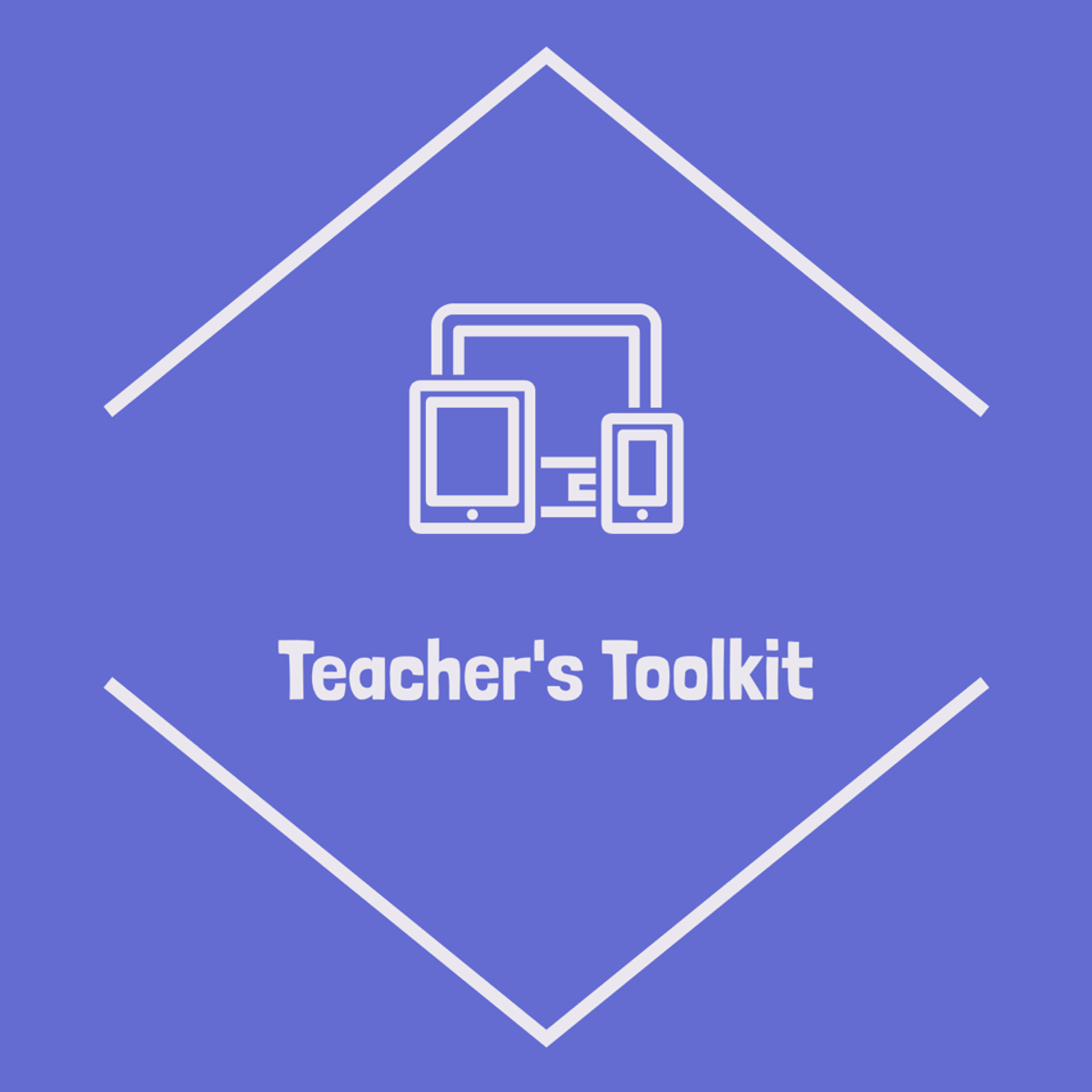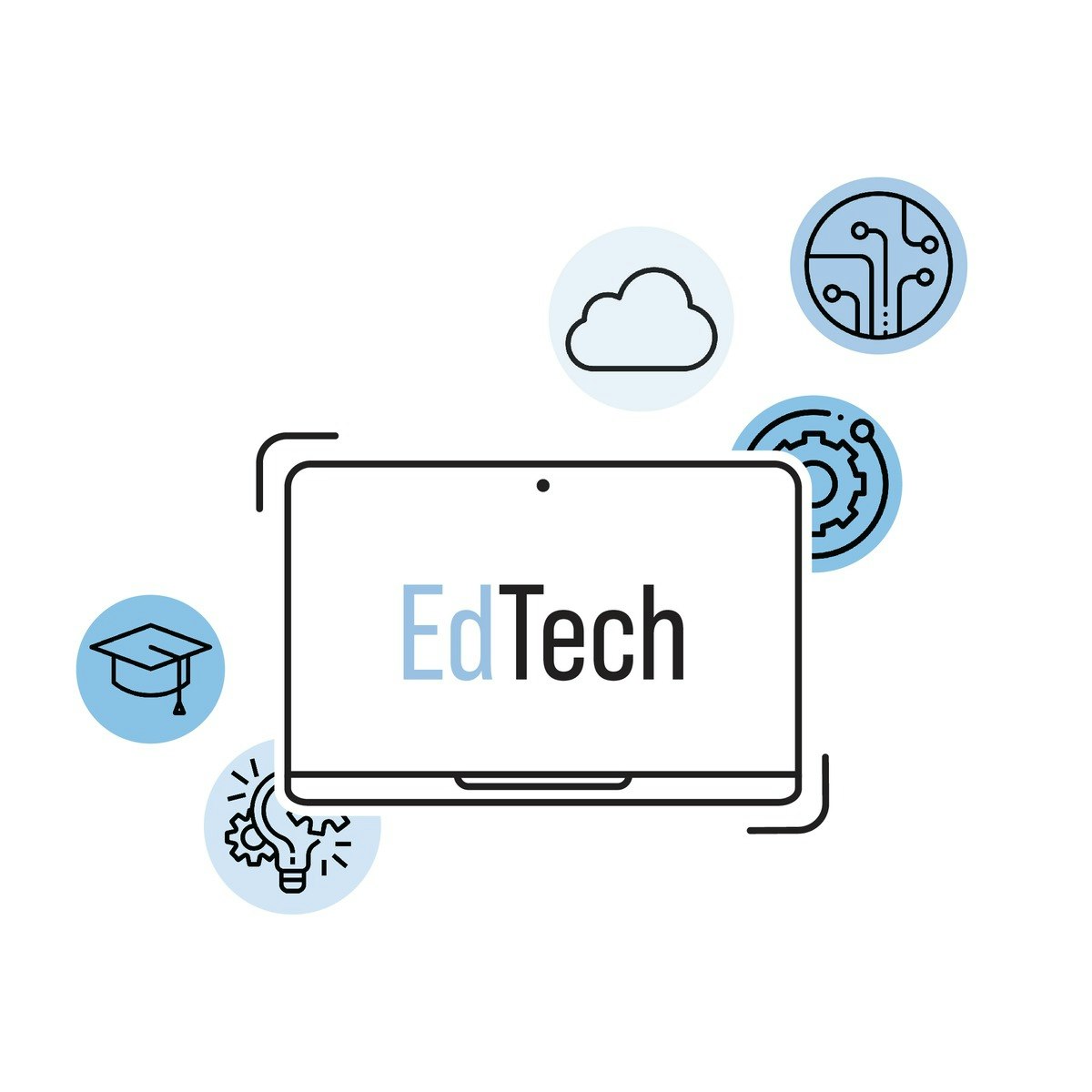K-12 Teacher
K-12 Teacher: Shaping Futures in the Classroom
K-12 teachers play a foundational role in society, guiding students through their formative years from kindergarten through twelfth grade. They are responsible for planning lessons, instructing students in various subjects, assessing progress, and managing classroom environments. This career involves educating children and adolescents across diverse developmental stages, requiring adaptability and a deep commitment to student growth.
Working as a K-12 teacher offers the unique reward of witnessing intellectual and personal development firsthand. Teachers have the opportunity to spark curiosity, foster critical thinking, and shape the future citizens of our communities. Engaging with young minds daily and helping them achieve milestones can be incredibly fulfilling and impactful.
Understanding the Role of a K-12 Teacher
What Does a K-12 Teacher Do?
A K-12 teacher educates students within elementary, middle, or high school settings. Their primary role involves delivering instruction based on a set curriculum, often specializing in specific subjects at the secondary level (middle and high school). Elementary teachers typically cover a broader range of subjects for a single group of students throughout the day.
Beyond direct instruction, teachers create lesson plans, grade assignments, communicate with parents or guardians, and collaborate with colleagues and administrators. They adapt teaching methods to meet diverse student needs, including those with learning disabilities or those requiring advanced challenges. Classroom management, fostering a positive learning environment, and ensuring student safety are also key responsibilities.
The scope of work extends beyond school hours, often involving preparation, grading, professional development, and participation in school events. Teachers serve not just as educators, but often as mentors and role models, contributing significantly to students' social and emotional development alongside their academic learning.
Responsibilities Across Grade Levels
Responsibilities vary significantly depending on the grade level taught. Elementary school teachers (typically K-5 or K-6) focus on foundational skills in reading, writing, math, science, and social studies. They nurture social skills, creativity, and a love for learning in young children, often managing a single classroom throughout the day.
Middle school teachers (grades 6-8 or 7-9) guide students through early adolescence, a period of significant cognitive and emotional change. They usually specialize in one or two subjects, like math, science, English, or history, teaching multiple groups of students. Emphasis shifts towards more complex subject matter and developing independent study habits.
High school teachers (grades 9-12) typically specialize in a single subject area, preparing students for college, vocational training, or the workforce. They delve deeper into complex topics, encourage critical analysis, and help students navigate the transition to adulthood. Responsibilities may include preparing students for standardized tests and providing guidance on post-secondary options.
Regardless of the level, all K-12 teachers share the core duty of assessing student understanding and adjusting instruction accordingly. They must create inclusive environments that support all learners.
Who Becomes a K-12 Teacher?
The teaching profession attracts individuals passionate about education and child development. According to data from the National Center for Education Statistics (NCES), the K-12 teaching workforce in the U.S. is predominantly female, although the number of male teachers has seen some growth. The profession is also becoming more diverse, though representation often lags behind the diversity of the student population.
Many teachers enter the profession through traditional university programs, earning a bachelor's degree in education or a specific subject area followed by a teacher preparation program. However, alternative certification pathways cater to career changers who hold degrees in other fields, bringing diverse experiences into the classroom.
Successful teachers often possess strong communication, organizational, and interpersonal skills. Patience, empathy, creativity, and resilience are crucial traits for navigating the demands of the classroom and supporting student well-being effectively.
The Societal Impact of K-12 Education
K-12 teachers are cornerstones of a functioning society. They equip future generations with the knowledge, skills, and critical thinking abilities necessary to participate in democracy, contribute to the economy, and lead fulfilling lives. Their work directly influences individual opportunities and collective progress.
Education fosters social mobility and can help address inequality. By providing quality instruction and support, teachers empower students from all backgrounds to reach their potential. They cultivate informed citizens capable of navigating complex information and engaging constructively with diverse perspectives.
The influence of a dedicated teacher can extend far beyond academic learning, shaping students' values, aspirations, and sense of self-worth. This profound impact underscores the immense responsibility and potential reward inherent in the teaching profession.
Formal Education Pathways to Teaching
Undergraduate Degree Requirements
The most common route to becoming a K-12 teacher begins with a bachelor's degree. Prospective elementary teachers often major in elementary education, which provides broad training across subjects and pedagogy. Aspiring middle and high school teachers typically major in the subject they wish to teach (e.g., English, Mathematics, Biology) and complete a teacher preparation program concurrently or post-baccalaureate.
Teacher preparation programs integrate coursework in educational psychology, teaching methods, curriculum development, and classroom management with practical field experiences, including student teaching. These programs are designed to meet state requirements for initial licensure.
Choosing the right program is crucial. Look for accredited institutions whose programs align with your career goals and the specific requirements of the state where you intend to teach. OpenCourser's Education category offers a wide array of foundational courses that can supplement formal degree programs.
Navigating State Certification
Obtaining a license or certification is mandatory for teaching in public K-12 schools in the United States. Requirements vary significantly by state, making it essential to research the specific rules of the state where you plan to work. Generally, this involves holding a bachelor's degree, completing an approved teacher preparation program, passing standardized tests (such as the Praxis series), and undergoing a background check.
Certification often specifies grade levels (e.g., K-6, 7-12) and subject areas (e.g., Mathematics, Special Education). Maintaining certification typically requires ongoing professional development or continuing education credits throughout a teacher's career.
Resources like state Department of Education websites are the primary source for detailed certification information. Organizations like the National Council on Teacher Quality (NCTQ) also provide comparative data, though specific state sites should always be consulted for official requirements.
Alternative Certification Programs
For individuals holding a bachelor's degree in a field other than education, alternative certification programs offer an expedited pathway into teaching. These programs are designed for career changers or those who decided to pursue teaching after completing their undergraduate studies. They often involve intensive pedagogical training combined with supervised teaching experience.
Alternative routes vary widely in structure, duration, and cost. Some programs place candidates in classrooms quickly while they complete coursework, while others follow a more traditional sequence. These pathways can be an excellent option for bringing subject matter expertise and diverse life experiences into schools.
If you're considering a career change into teaching, exploring these alternative routes can be encouraging. They acknowledge the value of your existing knowledge while providing the necessary pedagogical foundation. Thoroughly research program options in your state to find one that fits your background and goals.
Graduate Degrees for Specialization and Advancement
While a bachelor's degree is the typical entry point, many teachers pursue master's or doctoral degrees to deepen their expertise, specialize in specific areas, or move into leadership roles. A master's degree in Education (M.Ed.), Curriculum and Instruction, Educational Leadership, or a specific subject area can enhance teaching practice and often leads to a salary increase.
Specializations like Special Education, English as a Second Language (ESL), or Gifted and Talented Education require additional coursework and endorsements, often obtainable through graduate programs. These roles address critical needs within schools.
Graduate degrees can also pave the way for roles outside the traditional classroom, such as becoming a school principal, instructional coordinator, or district administrator. Some teachers pursue doctoral degrees (Ed.D. or Ph.D.) for roles in higher education or educational research.
Essential Skills for K-12 Teachers
Mastering Classroom Management
Effective classroom management is crucial for creating a productive learning environment. This involves establishing clear expectations for behavior, implementing consistent routines, and engaging students proactively. Skilled teachers build positive relationships with students, fostering mutual respect and minimizing disruptions.
Strategies include arranging the physical classroom space thoughtfully, using non-verbal cues, employing positive reinforcement, and having clear consequences for misbehavior. It's less about enforcing rules rigidly and more about creating a community where students feel safe, respected, and motivated to learn.
Developing strong classroom management skills takes time and practice. New teachers often find this one of the most challenging aspects of the job. Seeking mentorship from experienced colleagues and utilizing professional development resources can be very beneficial.
Employing Differentiated Instruction
Students learn at different paces and in different ways. Differentiated instruction involves tailoring teaching methods, materials, and assessments to meet the diverse needs of learners within a single classroom. This might mean offering various ways for students to access content, process information, and demonstrate their understanding.
For example, a teacher might provide reading materials at different levels, offer choices in assignment formats (e.g., written report, presentation, project), or group students flexibly based on their learning needs for specific activities. The goal is to ensure every student is appropriately challenged and supported.
Implementing differentiated instruction requires a deep understanding of student strengths and weaknesses, ongoing assessment, and creativity in lesson design. It acknowledges that a one-size-fits-all approach doesn't serve all students effectively.
These courses offer insights into effective teaching methodologies and catering to diverse student needs.
Designing Effective Assessments
Assessment is more than just assigning grades; it's a vital tool for understanding student learning and informing instruction. Teachers use various assessment methods, including formative assessments (ongoing checks for understanding like quizzes or exit tickets) and summative assessments (evaluations at the end of a unit like tests or projects).
Effective assessments accurately measure whether students have met learning objectives. They should be fair, valid, and reliable. Teachers need skills in designing clear rubrics, crafting meaningful questions, and interpreting assessment data to identify learning gaps and adjust teaching strategies.
Beyond traditional tests, teachers employ performance tasks, portfolios, observations, and self-assessments to gain a comprehensive picture of student progress. Utilizing tools like Google Forms can streamline some assessment processes.
This project-based course demonstrates practical application of digital tools for assessment and classroom organization.
Integrating Technology Effectively
Technological literacy is increasingly essential for K-12 teachers. This involves not only using basic tools like email and grade books but also integrating digital resources and educational technology (EdTech) meaningfully into instruction. Tools can range from interactive whiteboards and learning management systems (LMS) to educational apps and online collaboration platforms.
Effective technology integration enhances learning, rather than merely substituting traditional methods. It can provide access to vast resources, facilitate personalized learning, foster collaboration, and develop students' digital citizenship skills. Teachers need ongoing training to stay current with evolving technologies and pedagogical best practices for their use.
Understanding the landscape of educational technology is crucial for modern educators.
Career Progression and Advancement
Starting Your Teaching Career
Most K-12 teachers begin their careers as classroom instructors upon completing their certification requirements. Initial years often involve honing classroom management skills, refining instructional techniques, and adapting to the specific culture and policies of their school and district. Mentorship programs for new teachers can provide invaluable support during this period.
Entry-level positions typically involve teaching a standard course load within one's certified subject area and grade level. New teachers gradually take on additional responsibilities, such as advising student clubs, participating in school committees, or mentoring future student teachers.
The first few years can be demanding, but they are also a critical time for growth and establishing a foundation for a long and rewarding career. Persistence and a commitment to continuous learning are key.
Pathways to Leadership Roles
Experienced teachers have several pathways for advancement. Within the school, opportunities exist to become a lead teacher, department chair, or instructional coach, mentoring colleagues and guiding curriculum development. These roles often combine teaching responsibilities with leadership duties.
For those interested in broader administrative roles, pursuing further education (typically a master's degree in educational leadership or administration) can lead to positions like assistant principal or principal. These roles involve managing school operations, overseeing staff, and setting the overall educational direction.
Other advancement opportunities exist at the district level, such as curriculum specialists, program coordinators, or superintendents, often requiring advanced degrees and significant experience.
Importance of Continuing Education
Teaching is a field that requires lifelong learning. Most states mandate continuing education credits or professional development hours to maintain teaching certification. This ensures educators stay current with pedagogical research, curriculum standards, technological advancements, and evolving student needs.
Professional development can take many forms, including workshops, conferences, graduate courses, online learning modules, and participation in professional learning communities. Engaging in ongoing learning not only meets requirements but also revitalizes teaching practice and opens doors to new opportunities.
Platforms like OpenCourser offer numerous courses relevant to professional development, allowing teachers to learn flexibly and affordably. Exploring topics like Educational Psychology or specific instructional strategies can significantly enhance effectiveness.
Opportunities for Specialization
Teachers can choose to specialize in various areas to meet specific student needs or pursue particular interests. Common specializations include special education, serving students with disabilities; English as a Second Language (ESL) or English Language Learners (ELL), supporting students acquiring English; and gifted and talented education.
Other areas include reading specialist, math specialist, or technology integration specialist. These roles often require additional certification or endorsements, typically earned through graduate coursework or specialized training programs. Specializing can lead to different roles within a school or district and sometimes comes with salary incentives.
Focusing on a specialization allows teachers to develop deep expertise and make targeted contributions to student success in critical need areas.
Challenges in Modern K-12 Teaching
Workload, Stress, and Burnout
Teaching is often described as a demanding profession with significant workload pressures. Beyond instructional time, teachers dedicate many hours to planning, grading, communicating with parents, attending meetings, and fulfilling administrative duties. This can lead to long work weeks and contribute to stress.
Teacher burnout is a serious concern in the field, driven by factors like heavy workloads, lack of resources, challenging student behaviors, and insufficient support. Data often points to relatively high turnover rates, particularly among new teachers. For instance, research from organizations like the Learning Policy Institute often highlights these challenges.
Recognizing these pressures is important for aspiring teachers. Developing strong organizational skills, setting boundaries, seeking support from colleagues and mentors, and practicing self-care are crucial for maintaining well-being and longevity in the profession. While challenging, many find the rewards outweigh the difficulties.
Funding and Resource Limitations
Many schools, particularly those in under-resourced communities, face limitations in funding. This can impact class sizes, availability of current textbooks and technology, access to support staff like counselors and aides, and funding for extracurricular activities and professional development.
Teachers often find themselves needing to be creative and resourceful, sometimes spending their own money on classroom supplies. Disparities in funding between districts can also exacerbate educational inequities, creating challenges for teachers working in high-needs schools.
Advocacy for adequate and equitable school funding is an ongoing issue within the education sector. Teachers often play a role in highlighting needs and seeking solutions within their schools and communities.
Navigating Changing Educational Policies
The educational landscape is frequently influenced by evolving local, state, and federal policies. Changes related to curriculum standards (like the Common Core), standardized testing requirements, teacher evaluation methods, and school accountability measures can significantly impact teachers' work.
Adapting to new policies requires flexibility and continuous learning. Teachers must stay informed about changes and understand how they affect their classroom practices and professional responsibilities. Policy shifts can sometimes create additional workload or require adjustments to long-standing methods.
Understanding the context of policy decisions can be helpful. This course explores educational policies, particularly within the Latin American context, offering a broader perspective (note: course is in Spanish).
Addressing Diversity and Inclusion
Modern classrooms are increasingly diverse, reflecting a wide range of student backgrounds, cultures, languages, learning styles, and abilities. Creating inclusive learning environments where all students feel valued, respected, and supported is a fundamental responsibility and ongoing challenge for teachers.
This requires culturally responsive teaching practices, awareness of potential biases, and strategies to address achievement gaps and ensure equitable opportunities for all learners. Teachers must navigate sensitive topics and foster respectful dialogue among students with differing perspectives.
Ongoing professional development in areas like diversity, equity, and inclusion (DEI) is critical for equipping teachers with the skills and understanding needed to effectively serve all students in a diverse society.
Online Learning and Professional Development
Digital Teaching Certifications and Skills
The rise of online and blended learning has created demand for teachers skilled in virtual instruction. Specific certifications or endorsements in online teaching are becoming more common, equipping educators with strategies for engaging students effectively in digital environments.
Skills needed for online teaching include proficiency with learning management systems (LMS), video conferencing tools, digital assessment methods, and strategies for building community and rapport remotely. Designing engaging online content and providing timely feedback are also critical.
Online courses can provide valuable training in these areas, helping teachers adapt to or specialize in virtual instruction models.
These courses focus specifically on the skills and technologies needed for effective virtual K-12 teaching.
Adapting to Hybrid Classroom Models
Hybrid or blended learning models, which combine face-to-face instruction with online components, are increasingly prevalent. Teaching effectively in a hybrid format requires careful planning to integrate both modes seamlessly and ensure equitable learning experiences for all students, whether present physically or remotely.
Teachers need strategies for managing logistics, facilitating interaction between in-person and remote learners, and leveraging technology to enhance instruction across both settings. This model demands flexibility and strong organizational skills.
Professional development focused on blended learning pedagogy can help teachers navigate the unique challenges and opportunities presented by hybrid environments. OpenCourser's extensive catalog allows learners to browse courses across various educational technology topics.
The Rise of Micro-credentialing
Micro-credentials offer teachers a way to gain recognition for specific skills or competencies, often through shorter, focused learning experiences. These digital badges or certificates can validate expertise in areas like classroom technology integration, project-based learning, or supporting students with specific needs.
Unlike traditional degrees or certifications, micro-credentials provide targeted validation of discrete skills. They can supplement formal qualifications, demonstrate commitment to ongoing professional growth, and potentially support career advancement or specialization.
Many organizations and platforms offer micro-credentials relevant to educators. They represent a flexible and often more accessible way for teachers to upskill throughout their careers.
Strategies for Self-Directed Learning
Beyond formal requirements, proactive self-directed learning is invaluable for teachers. Staying curious, exploring new teaching methods, reading educational research, and networking with peers can significantly enhance professional growth. Online resources offer unprecedented access to information and learning opportunities.
Platforms like OpenCourser empower educators to take control of their professional development. Learners can explore courses on specific topics, follow learning paths, and even save and organize resources for future reference. Developing habits of lifelong learning is key to staying effective and engaged in the profession.
The OpenCourser Learner's Guide provides tips on effective self-study and leveraging online courses, which can be particularly useful for busy educators managing their own professional growth.
Global Perspectives on K-12 Teaching
Comparative Salary Structures
Teacher salaries vary significantly across countries and even within regions of the same country. Factors influencing pay include national economic conditions, government investment in education, cost of living, teacher qualifications and experience, and the strength of teacher unions.
In some nations, teacher salaries are highly competitive with other professions requiring similar levels of education, while in others, pay may lag significantly. Organizations like the OECD (Organisation for Economic Co-operation and Development) often publish comparative data on teacher compensation in member countries.
Understanding these variations is important for educators considering international opportunities or researchers studying global education systems. Salary is often a key factor in attracting and retaining qualified teachers.
International Certification and Reciprocity
Teaching certification obtained in one country is not always automatically recognized in another. Educators seeking to teach abroad often need to navigate complex processes to have their credentials evaluated and potentially meet additional requirements in the host country.
Reciprocity agreements, which facilitate the transfer of teaching licenses between jurisdictions, exist in some cases but are not universal. Requirements might include language proficiency tests, additional coursework specific to the host country's curriculum or educational laws, or further examinations.
Thorough research into the specific requirements of the target country's ministry of education or certifying body is essential for anyone planning to teach internationally. International schools often have their own specific hiring criteria as well.
Cultural Adaptation in International Settings
Teaching abroad involves more than just navigating certification; it requires significant cultural adaptation. Educators must adjust to different educational philosophies, classroom norms, student expectations, communication styles, and societal values.
Building relationships with students, parents, and colleagues from different cultural backgrounds requires sensitivity, openness, and a willingness to learn. Understanding the local context is crucial for effective teaching and positive integration into the school community.
While challenging, the experience of teaching internationally can be immensely rewarding, offering unique opportunities for personal and professional growth and fostering cross-cultural understanding.
Global Demand for K-12 Teachers
Demand for qualified K-12 teachers exists globally, although specific needs vary by country, region, and subject area. Developing nations often face shortages, particularly in rural areas or specialized fields like STEM (Science, Technology, Engineering, Math) and special education.
Developed countries may experience shortages due to factors like teacher retirement rates, population growth in certain areas, or difficulties recruiting for specific subjects. International schools catering to expatriate communities also represent a significant source of employment for internationally-minded educators.
Researching specific countries or regions of interest through education ministries, international school associations, or recruitment agencies can provide insights into current demand hotspots and required qualifications.
Ethical Considerations in Education
Protecting Student Privacy
Teachers handle sensitive information about students daily, including grades, health records, behavioral notes, and family circumstances. Maintaining student confidentiality and adhering to privacy regulations, such as the Family Educational Rights and Privacy Act (FERPA) in the United States, is a critical ethical and legal obligation.
This involves securely storing records, sharing information only with authorized individuals on a need-to-know basis, and being mindful of privacy in communications about students, whether verbal, written, or digital. Teachers must understand and uphold school and district policies regarding data privacy.
Ethical practice demands respect for students' dignity and right to privacy, building trust with students and families.
Addressing Bias in Curriculum and Instruction
Educators have an ethical responsibility to provide instruction and select materials that are free from bias and culturally responsive. This involves critically examining curriculum resources for stereotypes, omissions, or perspectives that marginalize certain groups.
Teachers should strive to present diverse viewpoints and experiences, fostering an inclusive environment where all students see themselves reflected positively in their learning. This requires ongoing self-reflection to recognize and mitigate personal biases that could influence teaching practices or interactions with students.
Promoting equity requires conscious effort to ensure that instructional strategies and materials support the success of all learners, regardless of their background.
Ensuring Equity in Resource Allocation
Within their sphere of influence, teachers often face ethical considerations regarding the distribution of resources, time, and attention among students. Ensuring equitable access to learning opportunities and support for all students, particularly those with greater needs, is paramount.
This might involve advocating for necessary resources for the classroom or school, differentiating support based on individual student needs, and being mindful of how classroom practices might inadvertently favor certain students over others.
Striving for fairness and equity in daily interactions and resource distribution is a core tenet of ethical teaching practice.
Upholding Professional Conduct Standards
Teachers are held to high standards of professional conduct, both inside and outside the classroom. This includes maintaining appropriate boundaries with students, interacting respectfully with colleagues and parents, demonstrating integrity, and acting as positive role models.
Professional ethics codes, often established by state licensing bodies or professional organizations, provide guidance on expected conduct. Violations can lead to disciplinary action, including loss of certification.
Adhering to ethical principles ensures the well-being of students and maintains public trust in the teaching profession.
K-12 Teacher Workforce Trends
Job Growth and Regional Demand
The overall demand for K-12 teachers is influenced by factors like student enrollment numbers, teacher retirement rates, and government education budgets. According to the U.S. Bureau of Labor Statistics (BLS), employment growth for teachers varies by grade level, with projections generally indicating steady but modest growth overall.
However, demand can vary significantly by region and subject area. Shortages are often reported in specific fields like special education, bilingual education, STEM subjects (science, technology, engineering, math), and in certain geographic locations, particularly rural and urban high-needs districts.
Aspiring teachers should research employment prospects in their desired state and specialization. Understanding regional demand can inform decisions about where to seek certification and employment.
The Impact of Artificial Intelligence in Education
Artificial intelligence (AI) is beginning to influence education, presenting both opportunities and challenges for teachers. AI tools have the potential to assist with tasks like personalized learning recommendations, automated grading for certain assignment types, and providing students with instant feedback.
However, concerns exist regarding data privacy, algorithmic bias, the potential for over-reliance on technology, and the irreplaceable role of human connection and mentorship in teaching. Teachers will need to adapt, learning how to leverage AI tools effectively while maintaining their focus on holistic student development.
The integration of AI is part of broader trends in educational innovation. Staying informed about these developments is increasingly important for educators.
Generational Shifts and Workforce Demographics
The K-12 teaching workforce is undergoing demographic shifts. As experienced teachers from the Baby Boomer generation retire, new generations, including Millennials and Gen Z, are entering the profession, bringing different perspectives, expectations, and technology skills.
Efforts are also underway to increase the diversity of the teaching workforce to better reflect the student populations served. Attracting and retaining teachers from diverse backgrounds remains a priority for many school districts.
These generational and demographic shifts can influence school culture, teaching practices, and the focus of professional development initiatives.
Unionization and Collective Bargaining
Teacher unions play a significant role in the K-12 education landscape in many areas, particularly in the public sector. Unions engage in collective bargaining with school districts over issues such as salaries, benefits, working conditions, class sizes, and teacher evaluation procedures.
Union membership rates and influence vary by state and district. Unions advocate for the professional interests of teachers and can be powerful forces in shaping educational policy and school practices.
Understanding the role and presence of teacher unions in a particular district is relevant for prospective teachers, as union contracts often define key aspects of employment.
Frequently Asked Questions
What is the average career lifespan of a K-12 teacher?
Teacher career lifespans vary widely. While many educators enjoy long careers spanning several decades, teacher attrition, particularly within the first five years, is a known challenge. Factors influencing longevity include working conditions, administrative support, salary, and personal fulfillment.
Data on average career length can fluctuate, but studies often indicate that a significant percentage of new teachers leave the profession relatively early. However, many others find teaching to be a deeply rewarding long-term career.
Support systems for new teachers, strong school leadership, and opportunities for professional growth can contribute positively to retention and career satisfaction.
How does teacher pay compare to similar professions?
Comparisons of teacher salaries to those of other professions requiring similar levels of education often show variability. In many regions, teacher pay lags behind that of other fields like nursing, accounting, or engineering, contributing to recruitment and retention challenges. This is sometimes referred to as the "teacher pay penalty."
However, compensation packages often include benefits like health insurance, retirement plans (pensions or defined contribution plans), and schedules with extended breaks, which should be considered in comparisons. Salaries also typically increase with experience and advanced degrees.
Salary levels are a frequent topic of policy debates and collective bargaining efforts, varying significantly by state and district.
Can international educators work in domestic school systems?
Yes, educators trained internationally can work in U.S. K-12 schools, but they typically need to meet specific requirements. This usually involves having their foreign credentials evaluated for equivalency, demonstrating English proficiency, and meeting the state's certification standards, which might include passing specific exams or completing additional coursework.
Some states may offer specific pathways or temporary licenses for internationally trained teachers, particularly in high-need subject areas like bilingual education or STEM. Visa requirements also apply for non-U.S. citizens.
The process can be complex and varies by state, so thorough research with the relevant state's Department of Education is crucial.
What are the most effective classroom management strategies?
Effective classroom management relies on proactive strategies rather than reactive discipline. Key approaches include establishing clear routines and expectations from day one, building positive relationships with students based on mutual respect, engaging students in lessons actively, and using non-confrontational techniques to address minor disruptions.
Consistency is vital – students thrive when they know what to expect. Positive reinforcement for desired behavior is often more effective than solely focusing on punishment. Differentiating instruction can also reduce behavioral issues by ensuring students are appropriately challenged and engaged.
There's no single "magic bullet," as the best strategies depend on the teacher's style, the students' age, and the specific classroom context. Continuous learning and adaptation are key.
How has remote learning impacted teacher workloads?
The shift to remote and hybrid learning models during and after the COVID-19 pandemic significantly impacted teacher workloads. Many educators reported increases in planning time needed to adapt lessons for online delivery, learn new technologies, and provide individualized support to students remotely.
Challenges included managing student engagement online, addressing technology access issues, and maintaining communication with students and families in a virtual setting. While some aspects may become streamlined with experience, remote instruction often requires different, and sometimes greater, time commitments compared to traditional classroom teaching.
The long-term effects on workload and the evolution of hybrid models continue to be areas of focus within the education community.
What support systems exist for new teachers?
Recognizing the challenges faced by novice educators, many schools and districts implement support systems. Mentorship programs, pairing new teachers with experienced colleagues, are common and highly beneficial. These mentors provide guidance on curriculum, classroom management, school procedures, and navigating the profession's emotional demands.
Induction programs often include specialized professional development tailored to the needs of beginning teachers. Professional learning communities (PLCs) offer opportunities for collaboration and peer support. Access to supportive administrators and instructional coaches can also make a significant difference.
Actively seeking out and utilizing available support systems is crucial for new teachers to thrive during their initial years.
Embarking on a career as a K-12 teacher is a significant commitment that offers profound rewards alongside notable challenges. It requires dedication, continuous learning, and a genuine passion for fostering student growth. By carefully considering the requirements, skills, and realities of the profession, aspiring educators can make informed decisions and prepare for a potentially transformative career shaping young lives.








